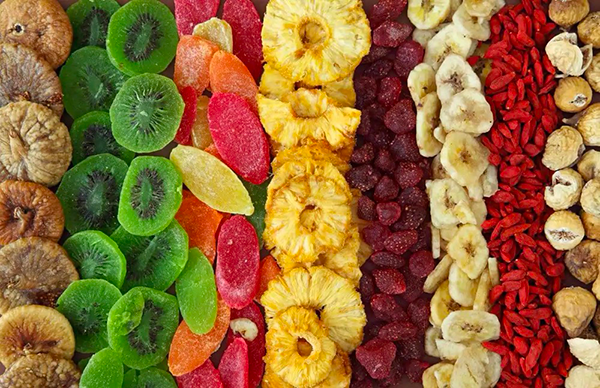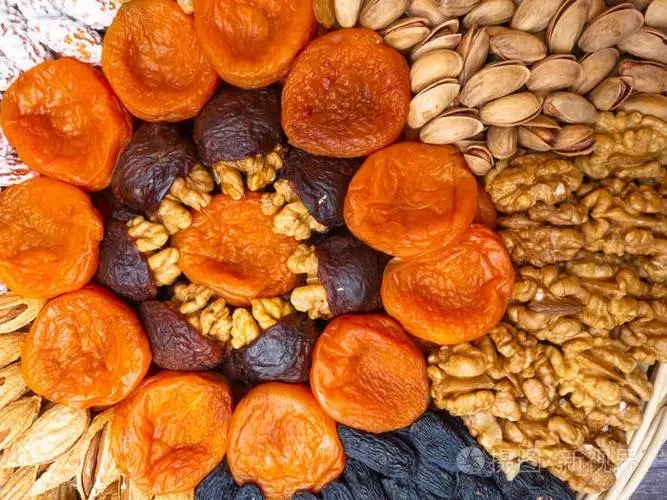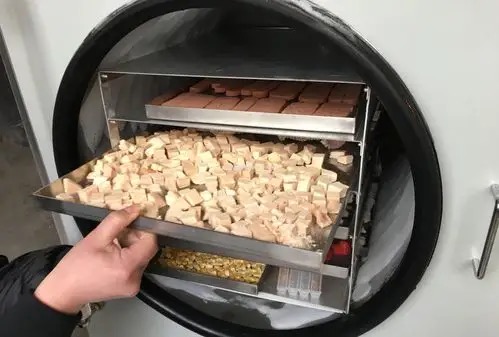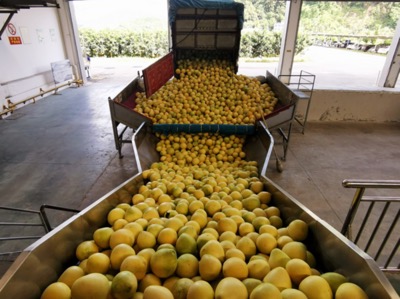
Content Menu
● Introduction
● What is a Heat Pump Dryer?
>> How Heat Pump Dryers Work
>> Advantages Over Traditional Drying Methods
● Benefits of Using Heat Pump Dryers
>> 1. Energy Efficiency
>> 2. Environmental Sustainability
>> 3. Versatility in Food Products
>> 4. Consistent Quality
>> 5. Reduced Operating Costs
>> 6. Improved Shelf Life
>> 7. Enhanced Nutritional Retention
● The Role of the Inflation Reduction Act
>> How Businesses Can Benefit
● Choosing the Right Heat Pump Dryer
>> 1. Capacity
>> 2. Energy Efficiency Ratings
>> 3. Features and Technology
>> 4. Manufacturer Reputation
>> 5. Maintenance Requirements
● Innovations in Heat Pump Dryer Technology
>> Smart Technology Integration
>> Improved Insulation Materials
>> Modular Designs
● Case Studies: Successful Implementations of Heat Pump Dryers
● Conclusion
● Related Questions
>> 1. What types of food can be dried using heat pump dryers?
>> 2. How does a heat pump dryer compare to traditional drying methods?
>> 3. What are the initial costs associated with purchasing a heat pump dryer?
>> 4. Are there any maintenance requirements for heat pump dryers?
>> 5. How can businesses take advantage of incentives from the Inflation Reduction Act?
Introduction
In the ever-evolving landscape of food processing, the demand for efficient and sustainable drying solutions has never been greater. As a leading manufacturer of food dehydrators in China, we provide OEM services to brands, wholesalers, and producers around the world. One innovation that has gained traction in recent years is the heat pump dryer, particularly in light of supportive policies like the Inflation Reduction Act. This article delves into the benefits of heat pump dryers, their operational principles, and how they align with global sustainability goals.

What is a Heat Pump Dryer?
A heat pump dryer is an advanced drying system that utilizes heat pump technology to extract moisture from food products. Unlike conventional dryers that rely on direct heat sources, heat pump dryers operate on a closed-loop system, making them more energy-efficient and environmentally friendly.
How Heat Pump Dryers Work
Heat pump dryers work by transferring heat from one place to another using a refrigerant. The process involves three main components:
1. Evaporator: Absorbs moisture from the food product and evaporates the refrigerant.
2. Compressor: Compresses the refrigerant gas, increasing its temperature.
3. Condenser: Releases the heat back into the drying chamber, allowing for efficient moisture removal.
This cycle continues until the desired moisture content is achieved in the food product.
Advantages Over Traditional Drying Methods
Traditional drying methods such as sun drying or hot air drying often lead to uneven moisture distribution and can degrade the quality of food products. In contrast, heat pump dryers ensure uniform drying conditions through precise temperature control and humidity management. This results in higher-quality dried foods that retain their flavor, color, and nutritional value.
Benefits of Using Heat Pump Dryers
1. Energy Efficiency
One of the most significant advantages of heat pump dryers is their energy efficiency. They can reduce energy consumption by up to 50% compared to traditional drying methods. This efficiency not only lowers operational costs but also aligns with the objectives of the Inflation Reduction Act, which promotes energy-saving technologies.
2. Environmental Sustainability
The use of heat pump dryers contributes to environmental sustainability by minimizing greenhouse gas emissions. As businesses increasingly seek eco-friendly solutions, adopting heat pump technology can enhance brand reputation and compliance with environmental regulations.
3. Versatility in Food Products
Heat pump dryers are suitable for various food products, including fruits, vegetables, herbs, and meats. Their ability to maintain low temperatures during drying helps preserve essential nutrients and flavors while extending shelf life.
4. Consistent Quality
Heat pump dryers provide uniform drying conditions, resulting in consistent product quality. This consistency is crucial for brands that prioritize quality assurance in their food products.
5. Reduced Operating Costs
While the initial investment in heat pump technology may be higher than traditional dryers, the long-term savings on energy bills and maintenance make it a cost-effective choice for food manufacturers.
6. Improved Shelf Life
By effectively removing moisture from food products without compromising their quality, heat pump dryers significantly extend shelf life. This is particularly important for businesses looking to reduce waste and increase profitability.
7. Enhanced Nutritional Retention
Heat pump dryers operate at lower temperatures compared to conventional methods, which helps retain vitamins and minerals in dried foods. This aspect is increasingly important as consumers become more health-conscious and seek nutritious snack options.
The Role of the Inflation Reduction Act
The Inflation Reduction Act has introduced various incentives for businesses to adopt energy-efficient technologies like heat pump dryers. These incentives include tax credits and rebates that can significantly offset initial costs, making it easier for manufacturers to transition to sustainable practices.
How Businesses Can Benefit
- Tax Credits: Businesses investing in heat pump technology may qualify for substantial tax credits under the Inflation Reduction Act.
- Rebates: State and local programs may offer additional rebates for purchasing energy-efficient equipment.
- Long-term Savings: With reduced energy consumption comes lower operating costs, leading to increased profitability over time.
By taking advantage of these incentives, businesses can not only improve their bottom line but also contribute positively to environmental efforts.
Choosing the Right Heat Pump Dryer
When selecting a heat pump dryer for your food processing needs, consider the following factors:
1. Capacity
Choose a dryer with an appropriate capacity based on your production volume. Larger operations may require industrial-sized units, while smaller businesses can opt for compact models.
2. Energy Efficiency Ratings
Look for models with high energy efficiency ratings to maximize savings and minimize environmental impact.
3. Features and Technology
Advanced features such as programmable controls, humidity sensors, and remote monitoring can enhance usability and efficiency.

4. Manufacturer Reputation
Partnering with a reputable manufacturer ensures quality equipment and reliable after-sales support.
5. Maintenance Requirements
Consider ease of maintenance when selecting a model; some units are designed for straightforward cleaning and upkeep while others may require specialized service.
Innovations in Heat Pump Dryer Technology
The field of heat pump dryer technology continues to evolve with advancements aimed at improving efficiency and user experience:
Smart Technology Integration
Modern heat pump dryers are increasingly equipped with smart technology that allows users to monitor performance remotely via mobile applications. This capability enables real-time adjustments based on humidity levels or production requirements.
Improved Insulation Materials
Advancements in insulation materials have led to better thermal retention within drying chambers, further enhancing energy efficiency and reducing operational costs.
Modular Designs
Some manufacturers now offer modular designs that allow businesses to expand their drying capacity as needed without significant upfront investment in new equipment.
Case Studies: Successful Implementations of Heat Pump Dryers
Several companies have successfully integrated heat pump dryers into their operations:
- Fruit Processing Company: A fruit processing company reported a 40% reduction in energy costs after switching from traditional drying methods to a heat pump dryer system while maintaining product quality.
- Herb Manufacturer: An herb manufacturer utilized heat pump technology to enhance flavor retention in dried herbs, resulting in higher market prices due to improved product quality.
- Meat Processor: A meat processing facility adopted heat pump dryers to produce jerky with extended shelf life while reducing waste through better moisture control.
These case studies illustrate how adopting innovative drying technologies can lead to significant operational improvements across various sectors within the food industry.
Conclusion
The integration of heat pump technology in food drying processes represents a significant advancement towards sustainable food production. As manufacturers seek to comply with environmental regulations and reduce operational costs, investing in heat pump dryers becomes increasingly attractive—especially with support from initiatives like the Inflation Reduction Act.
By understanding the benefits and operational principles of heat pump dryers, businesses can make informed decisions that enhance productivity while contributing to environmental sustainability. The future of food processing lies in embracing these innovative technologies that not only improve efficiency but also promote a greener planet for generations to come.

Related Questions
1. What types of food can be dried using heat pump dryers?
Heat pump dryers are versatile and can be used to dry fruits, vegetables, herbs, meats, and even fish while preserving their nutritional value.
2. How does a heat pump dryer compare to traditional drying methods?
Heat pump dryers are more energy-efficient and environmentally friendly compared to traditional methods like convection or solar drying.
3. What are the initial costs associated with purchasing a heat pump dryer?
Initial costs vary based on capacity and features but are often offset by long-term savings on energy bills due to their efficiency.
4. Are there any maintenance requirements for heat pump dryers?
Regular maintenance includes cleaning filters and checking refrigerant levels to ensure optimal performance.
5. How can businesses take advantage of incentives from the Inflation Reduction Act?
Businesses can benefit from tax credits and rebates by investing in energy-efficient technologies like heat pump dryers under this act.












